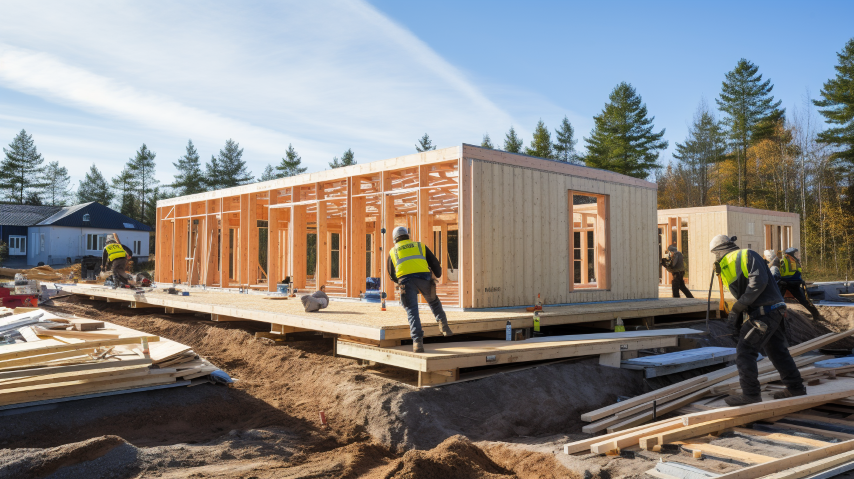We know you’re all about that eco-friendly lifestyle, right? Well, we’ve got some hot tips for you on how to create an energy-efficient prefab home that’s not only affordable and convenient but also super sustainable. So, if you’re dreaming of a simple, tiny home life in the Philippines, keep reading! We’re going to dive into passive design principles, energy-efficient materials and systems, renewable energy sources, and water conservation and efficiency. By embracing these strategies, you can enjoy a comfortable, eco-friendly living space that’s kind to Mother Earth and your wallet.
Passive Design Principles for Energy Efficiency
First things first, let’s talk about passive design principles. These are all about the home’s orientation, insulation, natural light, and ventilation. By optimizing these aspects, you can seriously cut down on energy consumption. Here’s how:
- Orientation: Position your prefab home to soak up natural sunlight during the day while avoiding direct exposure to the sun’s heat. It’s like finding the perfect spot at the beach!
- Insulation: Just like how you wouldn’t step out without your SPF, your home needs protection too. High-quality insulation materials in the walls, roof, and floors will keep the heat at bay.
- Natural Light: Who needs artificial lighting when you have the sun? Large windows and skylights will keep your home bright and cheery, saving energy.
- Ventilation: Good airflow is key to a comfortable indoor temperature and fresh air. Design your prefab home with strategically placed windows and openings to let the breeze in.
Energy-Efficient Materials and Systems
Next up, let’s talk about energy-efficient materials and systems. These can seriously up the sustainability game of your prefab home:
- Insulated Panels: These are like the thermal leggings of your home – they keep the heat in and the cold out.
- Low-E Windows: Low-emissivity (Low-E) windows are like sunglasses for your home. They reflect heat while letting natural light in.
- Energy-Efficient Appliances: Choose ENERGY STAR-rated appliances for your prefab home. They’re like the energy-saving superheroes of your kitchen and laundry room.
- Efficient HVAC Systems: Look for heating, ventilation, and air conditioning (HVAC) systems with high energy efficiency ratings. They’re the secret to a cool home without the hefty energy bill.
Integrating Renewable Energy Sources
Let’s get renewable. Integrating renewable energy sources into your prefab home design can help you live a greener life:
- Solar Panels: Harness the power of the sun with solar panels on your roof. It’s like getting a tan while also generating electricity and heating water.
- Wind Turbines: If you’re lucky enough to live somewhere windy, consider a small-scale wind turbine. It’s like having your own personal wind farm.
- Rainwater Harvesting: Collect rainwater for non-drinking uses. It’s like having your own personal water supply.
Water Conservation and Efficiency
Water is life. So let’s make sure we’re using it wisely:
- Efficient Fixtures: Low-flow faucets, showerheads, and toilets are the way to go. They’re like the diet version of your regular fixtures – they use less water but still get the job done.
- Greywater Recycling: Reuse water from sinks, showers, and laundry for irrigation. It’s like giving your plants a second serving of water.
- Native Landscaping: Choose plants that are adapted to the local climate and require less water. They’re like the low-maintenance friends of your garden – they don’t need much, but they still look great.
Retrofitting Existing Prefab Homes for Energy Efficiency
Already have a prefab home? No worries, you can still make it more energy-efficient:
- Insulation: Add insulation to your walls, roof, and floors. It’s like giving your home a cozy blanket.
- Windows: Replace older windows with energy-efficient ones. It’s like swapping out your old sunglasses for a new, more protective pair.
- Solar Panels: Install solar panels on your roof. It’s like giving your home its own personal sun.
- Energy-Efficient Appliances: Swap older appliances for ENERGY STAR-rated models. It’s like trading in your old car for a hybrid.
And don’t forget to check with your local government or the Department of Energy for any incentives, grants, or tax credits that could help with your energy-efficient retrofit project.
So there you have it. Building a sustainable and energy-efficient prefab home is totally doable. By incorporating passive design principles, using energy-efficient materials and systems, integrating renewable energy sources, and focusing on water conservation and efficiency, you can create a home that’s not only comfortable and eco-friendly but also totally on-trend. As the demand for sustainable housing continues to grow, prefab homes are the future of housing in the Philippines. So why not jump on the bandwagon and start living the sustainable life today?
